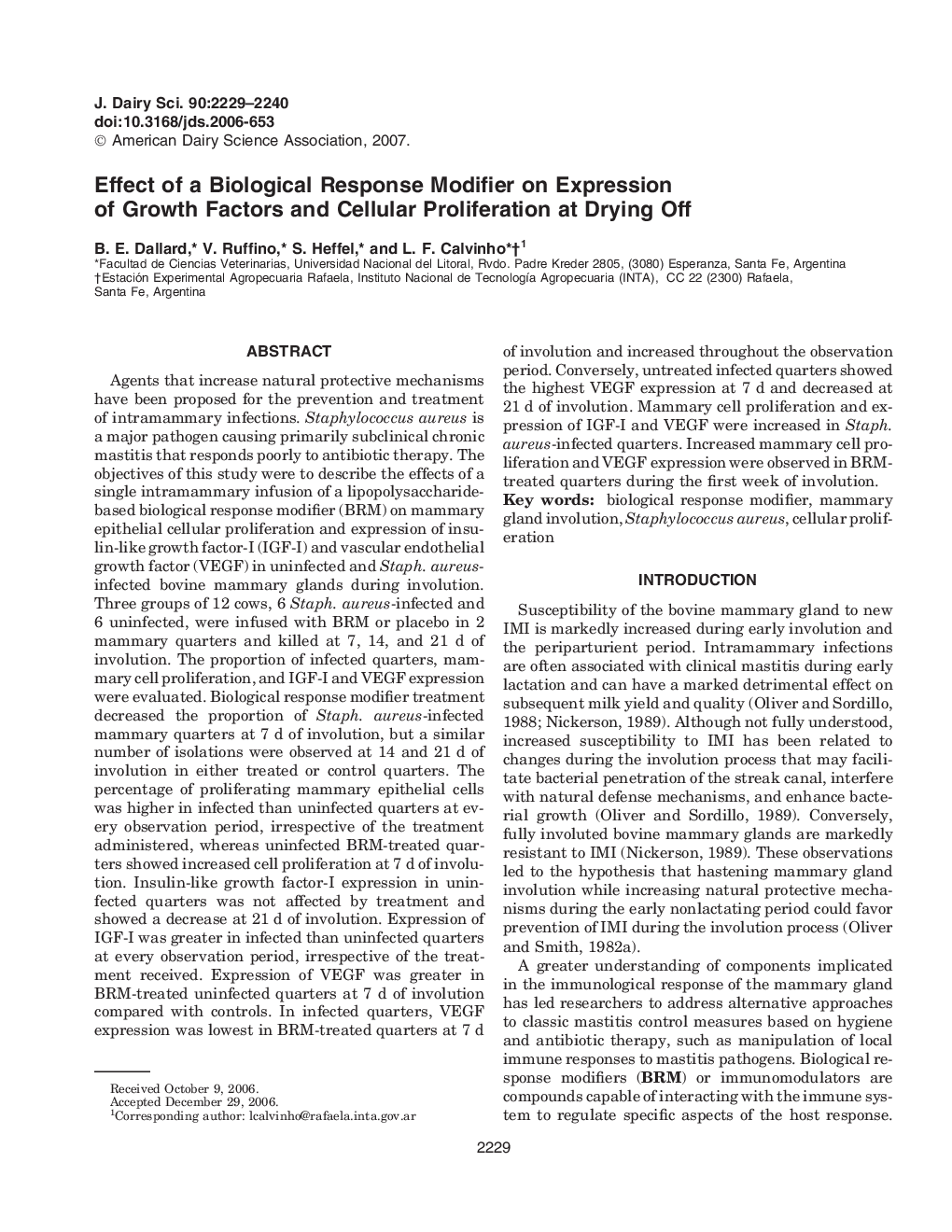| Article ID | Journal | Published Year | Pages | File Type |
|---|---|---|---|---|
| 2441149 | Journal of Dairy Science | 2007 | 12 Pages |
Abstract
Agents that increase natural protective mechanisms have been proposed for the prevention and treatment of intramammary infections. Staphylococcus aureus is a major pathogen causing primarily subclinical chronic mastitis that responds poorly to antibiotic therapy. The objectives of this study were to describe the effects of a single intramammary infusion of a lipopolysaccharide-based biological response modifier (BRM) on mammary epithelial cellular proliferation and expression of insulin-like growth factor-I (IGF-I) and vascular endothelial growth factor (VEGF) in uninfected and Staph. aureus-infected bovine mammary glands during involution. Three groups of 12 cows, 6 Staph. aureus-infected and 6 uninfected, were infused with BRM or placebo in 2 mammary quarters and killed at 7, 14, and 21 d of involution. The proportion of infected quarters, mammary cell proliferation, and IGF-I and VEGF expression were evaluated. Biological response modifier treatment decreased the proportion of Staph. aureus-infected mammary quarters at 7 d of involution, but a similar number of isolations were observed at 14 and 21 d of involution in either treated or control quarters. The percentage of proliferating mammary epithelial cells was higher in infected than uninfected quarters at every observation period, irrespective of the treatment administered, whereas uninfected BRM-treated quarters showed increased cell proliferation at 7 d of involution. Insulin-like growth factor-I expression in uninfected quarters was not affected by treatment and showed a decrease at 21 d of involution. Expression of IGF-I was greater in infected than uninfected quarters at every observation period, irrespective of the treatment received. Expression of VEGF was greater in BRM-treated uninfected quarters at 7 d of involution compared with controls. In infected quarters, VEGF expression was lowest in BRM-treated quarters at 7 d of involution and increased throughout the observation period. Conversely, untreated infected quarters showed the highest VEGF expression at 7 d and decreased at 21 d of involution. Mammary cell proliferation and expression of IGF-I and VEGF were increased in Staph. aureus-infected quarters. Increased mammary cell proliferation and VEGF expression were observed in BRM-treated quarters during the first week of involution.
Keywords
Related Topics
Life Sciences
Agricultural and Biological Sciences
Animal Science and Zoology
Authors
B.E. Dallard, V. Ruffino, S. Heffel, L.F. Calvinho,
